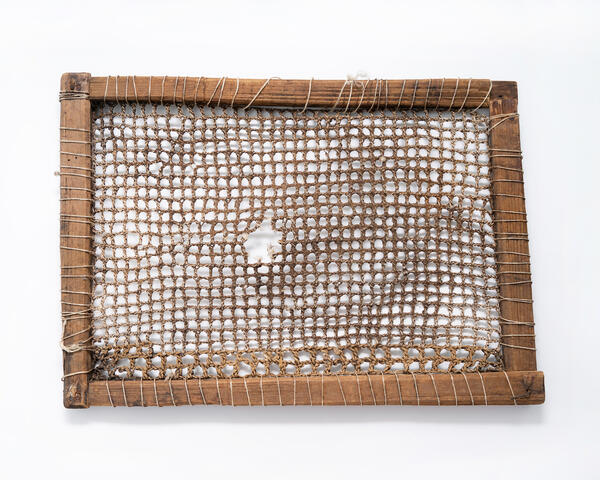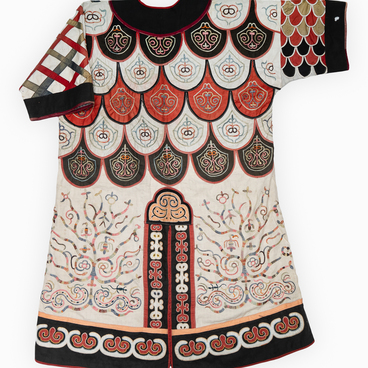The rectangular sieve screen presented in the museum’s collection was made in the first half of the 20th century. This item is a wooden frame with a mesh size of 1×1 centimeters. The craftsman wove this mesh of threads manually with special needles. The mesh is stretched according to the principle of embroidery hoops which are devices for needlework: the edges of the mesh are thrown over the frame.
With the help of a sieve screen, the caviar of fish, mainly chum salmon, was wiped, freeing it from the envelope. The device for extracting fish caviar was an integral attribute of the economic activity of the inhabitants of the Amur region, which was based on fishing.
The fact is that even if the fishermen carried out all the manipulations to release the chum salmon caviar from the envelope in the water, the eggs were still damaged. Thus, they were no longer suitable for salting and could not be stored. The amount of product was noticeably reduced.
Working with the sieve screen helped to reduce losses to a minimum: the eggs were easily separated, passed through holes in the grid and remained intact. The process did not take much time: holding a sieve over a wide bowl in one hand, the fisherman rubbed the caviar on the mesh with light movements of the other hand. He started from the thin end, moving from the bottom up. The resulting eggs were then washed with cold water and the litter — the remnants of the envelopes — was removed, after which they were rinsed again and left in a sieve for a quarter of an hour.
The migrant peasants who, due to the climate, came to the new lands of the Amur region from the central provinces of the Russian Empire at the end of the 19th century could not grow grains, which they as farmers were accustomed to. Being neighbors with the indigenous people, the Nanai people, helped. The settlers learned from them about fishing in the Amur River and its numerous channels and lakes.
They mainly caught chum salmon, sturgeon, great Siberian sturgeon, and whitefish, and they did it all year round. They harvested barrels of fish, red chum salmon caviar, black sturgeon caviar, and sold them on merchant ships from Blagoveshchensk, Khabarovsk, and Vladivostok. The settlers also hunted and sold furs.
Another source of income
was the postal chase. The peasants of the Lower Amur villages signed contracts
for the maintenance of post horses, thereby ensuring communication along the
Amur. In winter, the villagers were engaged in harvesting firewood for
steamships.





